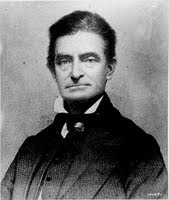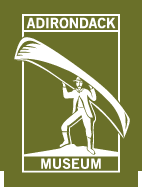 A project that helped celebrate the 400th anniversary of the navigation of Lake Champlain by Samuel de Champlain is being held up as an example of how partnerships between public broadcasters, libraries, and other entities can benefit communities.
A project that helped celebrate the 400th anniversary of the navigation of Lake Champlain by Samuel de Champlain is being held up as an example of how partnerships between public broadcasters, libraries, and other entities can benefit communities.
The Vermont Division for Historic Preservation joins the federal Institute of Museum and Library Services (IMLS) and the Corporation for Public Broadcasting (CPB) in announcing the release of a new publication, Partnership for a Nation of Learners: Joining Forces, Creating Value, which offers guidance on creating effective community collaborations.
The publication profiles the recent Lake Champlain Voyages of Discovery project of the Vermont Division for Historic Preservation and Chimney Point State Historic Site, with its partners—Vermont Public Television, Broadwing Productions, and the Bixby Memorial Free Library.
This project received a $250,000 grant from the Partnership for a Nation of Learners program, which united libraries, museums, and public broadcasters to address issues of central concern to their local communities.
“This program made it possible for our partnership to use many disciplines to look at the relatively unknown early history of Lake Champlain from before Samuel de Champlain’s arrival in 1609 up to the time of the American Revolution, engage our communities to participate with us, and to generate valuable resources for – as well as interest in – the 2009 Champlain 400th anniversary,” said Elsa Gilbertson, Voyages project director and Chimney Point administrator.
“The project products, including the New England Emmy-award winning documentary Champlain: The Lake Between- publication (Lake Champlain Voyages of Discovery: Bringing History Home)- forthcoming web site- exhibit at Chimney Point, new books and other materials at the Bixby Library- and Bixby educational kits for local schools will have a long-term effect on the region and how we understand this history,” Gilbertson said.
“I am gratified that the Partnership for a Nation of Learners project will live on through this publication, which spotlights exemplary community partnerships across the country, such as the one with the Vermont Division for Historic Preservation, and shares ‘how-to’ information on successful collaborations,” said IMLS Director Anne-Imelda Radice. “In these challenging economic times, partnerships are more valuable than ever.”
“Libraries, museums, and public broadcasting licensees are valuable and respected assets trusted by the public,” said Patricia de Stacy Harrison, President and Chief Executive Officer, Corporation for Public Broadcasting. “Together, they have an important role to play ensuring our democracy comprises an informed and educated citizenry, by providing lifelong learning opportunities for everyone.”
The new report is based on the work of the 2005 and 2006 PNL Community Collaboration Grants, which provided seed investments for 20 collaborative projects across the country. It can be read online at: www.imls.gov/pdf/PNLReport.pdf
The new IMLS book profiles illustrate how vital community organizations can collaborate to effectively tackle important local issues and achieve outcomes that would be unattainable for a single organization. It also provides a lessons learned section on best practices for successful partnerships.
The Chimney Point State Historic Site in Addison is located at the intersections of Vermont Routes 125 and 17, at the foot of the Lake Champlain Bridge, overlooking Lake Champlain.
It was the site of military installations in 1690, 1731, and during the American Revolution. The 1785 tavern building, listed on the National Register of Historic Places, houses exhibits interpreting the Native American, French colonial, and early American history of the area.
In the summer of 1759, as British forces closed in, the French retreated north into Canada, destroying their forts and burning their houses so that only the chimneys remained, lending the area its name.
 The Upstate History Alliance and the Museum Association of New York are sponsoring “New York State’s Museums in Conversation: What Inspires You?” a three-day conference April 11-13, 2010 at the Albany Marriott, Wolf Road, in Albany. The event organizers seeks discussion proposals that focus on what inspires you about the work of others, be they museums, libraries, nature centers or parks, small or big businesses. What have you seen that’s been so great, so innovative, so enterprising, so adaptable, and so fun that you want to talk about it with your colleagues?
The Upstate History Alliance and the Museum Association of New York are sponsoring “New York State’s Museums in Conversation: What Inspires You?” a three-day conference April 11-13, 2010 at the Albany Marriott, Wolf Road, in Albany. The event organizers seeks discussion proposals that focus on what inspires you about the work of others, be they museums, libraries, nature centers or parks, small or big businesses. What have you seen that’s been so great, so innovative, so enterprising, so adaptable, and so fun that you want to talk about it with your colleagues?





